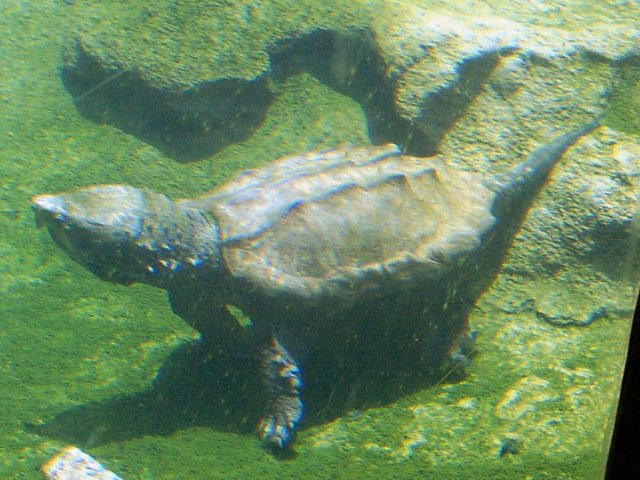Macroclemys temminckii
| |
|
| |
|
| |
|
| |
|
| |
|
| |
|
| |
|
| |
|

photo taken by page author |
|
Alligator Snapping Turtles live in rivers whose water will eventually drain into the Gulf of Mexico. They are the largest of all freshwater turtles in North America, and possibly the whole world. Spending most of their time in the deep water of large rivers, canals, lakes, swamps, and bayous, Alligator Snapping Turtles may only go onto land to nest their young. According to the Alligator Snapper Foundation, Alligator Snapping Turtles are sedentary. They stay submerged under water for very long periods of time and usually come up for air after 15 to 20 minutes. The Alligator Snapping Turtle will reach maturity at about 11
to 13 years of age. They usually mate during the months of April
and June, nesting about 2 months later. The clutches number
8 to 52 eggs in a nest just off the water's edge. Incubation
lasts from 80 to 110 days. The sex of their offspring is determined
by the incubation temperature. |
|
Special Feature: |
| In my own personal observations of the only
Alligator Snapping Turtle at the zoo, all it did was lie very still
submerged under the water. According to zoo workers, the turtle
is on the endangered species list, but is no longer threatened by
hunters wanting their meat. |
| Send E-mail to shoorina@hotmail.com or to mac@whozoo.org |
WhoZoo Animal
Index
Reptiles and Amphibians
at the Fort Worth Zoo


